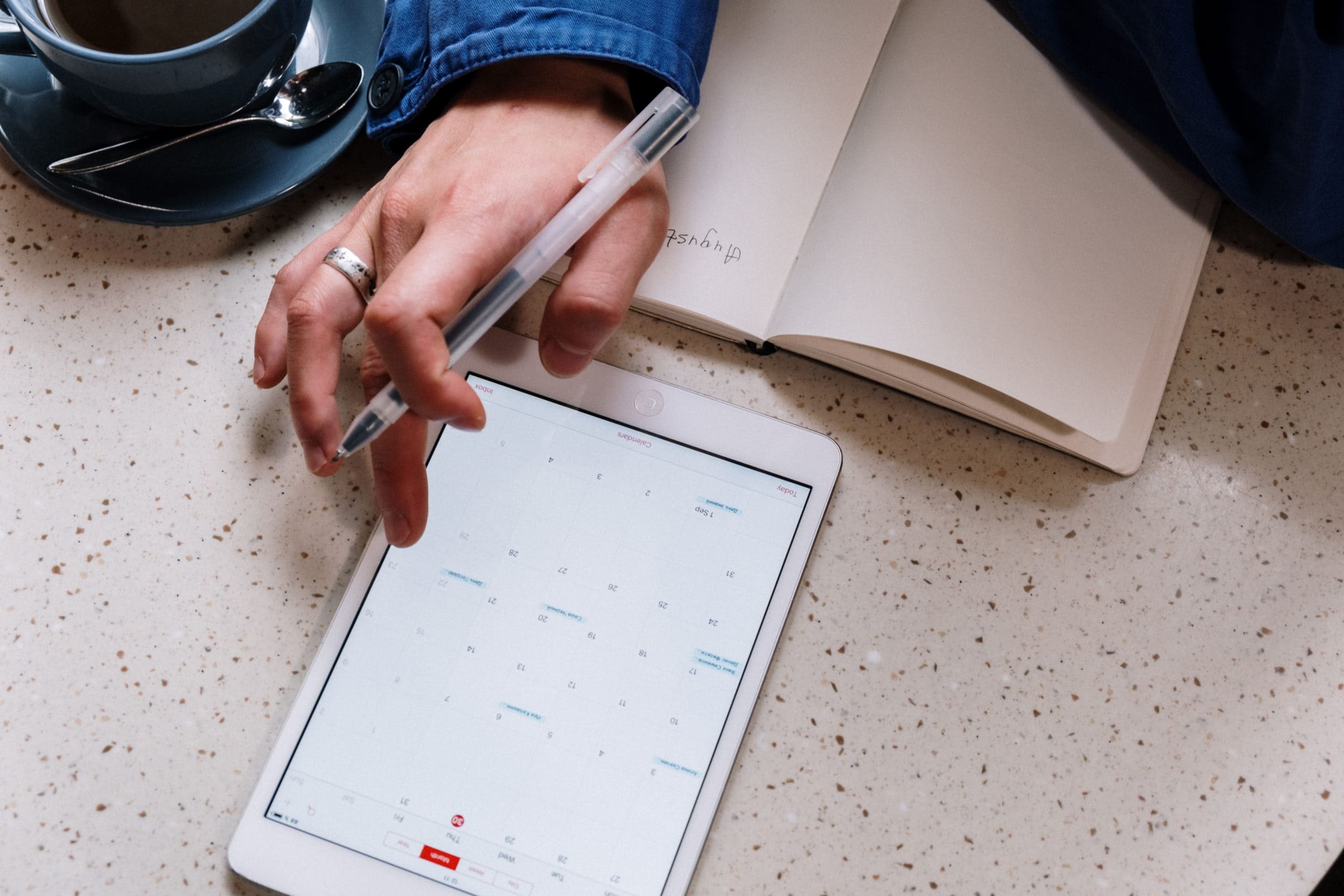
The simple calendar is an almighty tool that tends to get swept away underneath all the flashy task managers, productivity systems, and context-specific smartphone apps that we have nowadays.
The shocking truth is that most business professionals simply don’t know how to take advantage of their calendar applications – despite them being pretty much default on every platform in use (desktop, phone), and very easy to set up.
We’ll be making the assumption that you will use your calendar between your desktop and phone – some sync solutions will be mentioned below.
Quick Summary
- What goes in your calendar, and how to distinguish appointments from tasks.
- Structuring your calendar strategically, for maximum efficiency.
- The strategic use of reminders and how you can (ab)use them to form new habits.
- Making it all fit together.
What Goes in Your Calendar
Anything that you have to do at a specific time is an appointment that should go in your calendar.
You can contrast this with tasks, which are things that can be done at any time.
The difference between the two should be crystal clear – so if you’re unsure, please ask!
Most people are familiar with what should go in their calendar:
- The time you’re at work.
- Meetings at work.
- Social engagements.
- Reserved time for things you are working on (“time blocking”).
- Exercise/gym time.
This can be extended further to include things like:
- Scheduled meal times (especially if you’re on a specialized nutrition plan).
- Morning/Evening rituals.
It seems that most people tend to think about what goes in their calendars as “official” and something that they try to stick to. You can use this to your advantage and schedule time to work on important projects in your life.
Structuring Your Calendar
A really common question that we get is how rigidly or in how much detail should people structure their calendars.
What this comes down to is your life, your lifestyle, and what you have going on. Some people (like me) find it highly beneficial to have meal times, their morning ritual, and work times in their calendar. Other people will probably hate having those things in there as a reminder of what they should be doing.
Be sure not to go crazy with chunking down time – we recommend 1 hour, or maybe 30 minutes max as the smallest unit of time you have in your calendar. Any more than that and the amount of micromanagement and mode-switching makes it counterproductive.
Time for another shocking truth: most people adhere too rigidly, or too loosely to their calendar.
The best approach is to respect your calendar, and to see it as your vision of an “ideal day”, and to put in your best effort to follow it – but to also recognize that sometimes things crop up and you need to be flexible.
Simply put: try your best to follow it, and don’t beat yourself up if you don’t 100%.
With that in mind, here are some structures you can put in place to turn your level of adherence into feedback:
- Decide what meetings or appointments you won’t be flexible on – e.g., meetings at work, particular social engagements, scheduled morning/evening rituals.
- When you do deviate from your preset schedule, make a note in your journal. If it happens a lot, that is a sign that your schedule needs to change.
A quick bonus tip is to use all-day events to highlight significant periods across a number of days, for example:
- When an important business contact is in town.
- When you are away on a conference like Ontrapalooza.
Strategic Use of Reminders
One of the best uses for your calendar is to set strategic reminders for yourself.
Most people already have alerts turned on for their desktop and phone-based calendars, and you can use this to your advantage by setting yourself alerts for things you want to remember throughout the day.
Here’s how it’s done:
- Set up a 5-minute appointment at the time you want to be reminded of something.
- Input what you need to be reminded of in the appointment title.
- Set the alert to “on date of event” or “at start of event”.
This is incredibly, incredibly useful and can be used to remind you of things like:
- When you need to drop off/pick up your laundry.
- Meal and supplement times, especially if you’re on a complex nutritional plan.
- Important time-blocked events, like when you should be doing some mind-expanding reading or working on an important side-project.
Why not set task alerts via something like OmniFocus? Because you can’t define which specific tasks have alerts, and if you’re a complex (or efficient) task organizer, you probably have 10-20 things due the next day, and alerts for all of them going off is not that helpful.
Remember to also use alerts for “normal” appointments like social engagements to help you get there on time. It still amazes me the number of people who cannot estimate transit time and set themselves a reminder to leave home/work the required 15/30/60 minutes beforehand to make it to an event on time.
Making it Work with Everything Else
So where does your calendar fit in your workflow?
Remember that tasks go into a dedicated task manager or todo list – not your calendar. And despite various software companies attempts, don’t try to combine the two.
You should look at your calendar in the morning to see the pace and rhythm of your day, then as you need to, refer to it throughout the day. As with your tasks, also take a look at the end of the day and work out what you’ve done (or not), and see what you’re doing to do tomorrow.
Next Actions
- Open up your calendar app.
- Start planning your “ideal day” for the upcoming week/month/year.
- Schedule it in.
- Set strategic reminders.